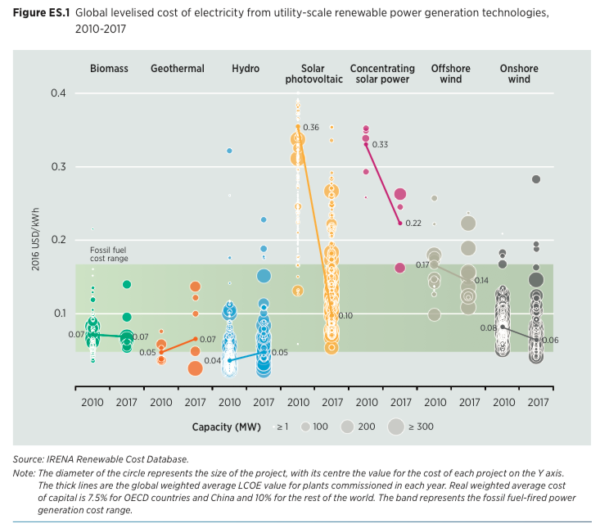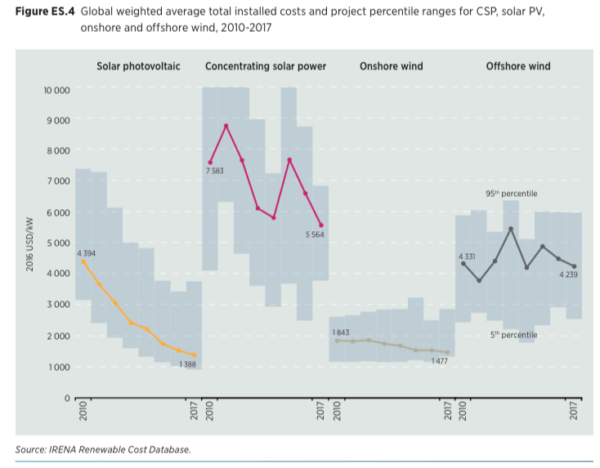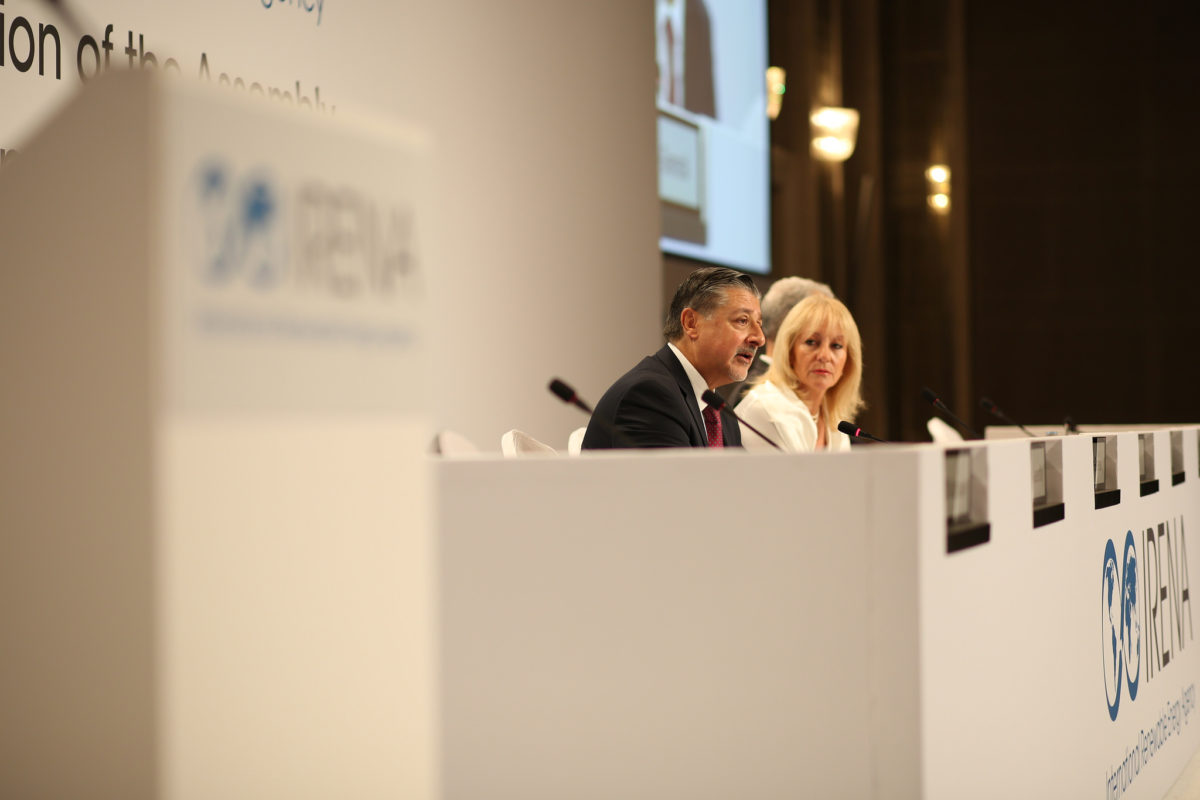Large-scale solar PV is leading the charge as all renewable sources of electricity race towards competitiveness with conventional generation, a milestone that IRENA says is set to be reached by 2020. Noting that the levelized cost of electricity (LCOE) from utility scale solar fallen by 73% since 2010, IRENA forecasts that cost to half again by 2020.
The impressive numbers were delivered as a part of IRENA’s latest report, Renewable Power Generation Costs in 2017 delivered yesterday on the first day of the 8th IRENA Assembly. The report charts renewable energy project costs globally, plotting the respective learning curves and comparing them to conventional generation sources such as coal, gas and nuclear.
IRENA Director General Adnan Z. Amin said that to see how ASEAN nations were adopting renewables ahead of new coal generation capacity, “if you just look at what is actually happening. He pointed specifically to China and its 50 GW PV installation achievement in 2017, adding that Asia generally was becoming “a very fast-moving market for renewables.”
“China has decided that it cannot continue on a carbon intensive energy pathway,” said Adnan. “China has consistently exceeded its targets for solar and wind… [and is] moving very fast. There is a lot of technical capacity and investment capacity in Asia today that is going to be quite transformative in the coming decade.”
Adnan said the IRENA had hosted a forum with ASEAN energy ministers in 2017 and that the organisation is “working with the ASEAN countries to develop an ambitious roadmap for the energy transition.”
The IRENA report on renewable generation costs found that globally the weighted cost of utility-scale solar had fallen to $0.10/kWh for new projects commissioned in 2017. It noted that during two years record low auction prices had been achieved for PV power plant projects in Dubai, Mexico, Peru, Chile, Abu Dhabi and Saudi Arabia.

IRENA forecasts large-scale solar prices to drop to $0.03/kWh, “given the right conditions”, from 2018 onwards.
Driving the precipitous cost declines were a number of factors. The IRENA report sets out improving technology, competitive procurement, and a “large base of experience, internationally active project developers” as being behind the cost trend.
Setting out the conditions under which low renewable energy project costs have been achieved, IRENA specified six factors. They include favourable regulations and institutional support; low risks regarding the country in which the project is located and in terms of the power offtaker, the presence of a strong engineering base; favourable taxes; low project development costs; and a good renewable resource.

Addressing the important role of project developers, IRENA Director General Amin described their growing numbers and experience as, “creating a dynamic and competitive marketplace.”
The 8th IRENA Assembly concludes today in Abu Dhabi.
This content is protected by copyright and may not be reused. If you want to cooperate with us and would like to reuse some of our content, please contact: editors@pv-magazine.com.









By submitting this form you agree to pv magazine using your data for the purposes of publishing your comment.
Your personal data will only be disclosed or otherwise transmitted to third parties for the purposes of spam filtering or if this is necessary for technical maintenance of the website. Any other transfer to third parties will not take place unless this is justified on the basis of applicable data protection regulations or if pv magazine is legally obliged to do so.
You may revoke this consent at any time with effect for the future, in which case your personal data will be deleted immediately. Otherwise, your data will be deleted if pv magazine has processed your request or the purpose of data storage is fulfilled.
Further information on data privacy can be found in our Data Protection Policy.